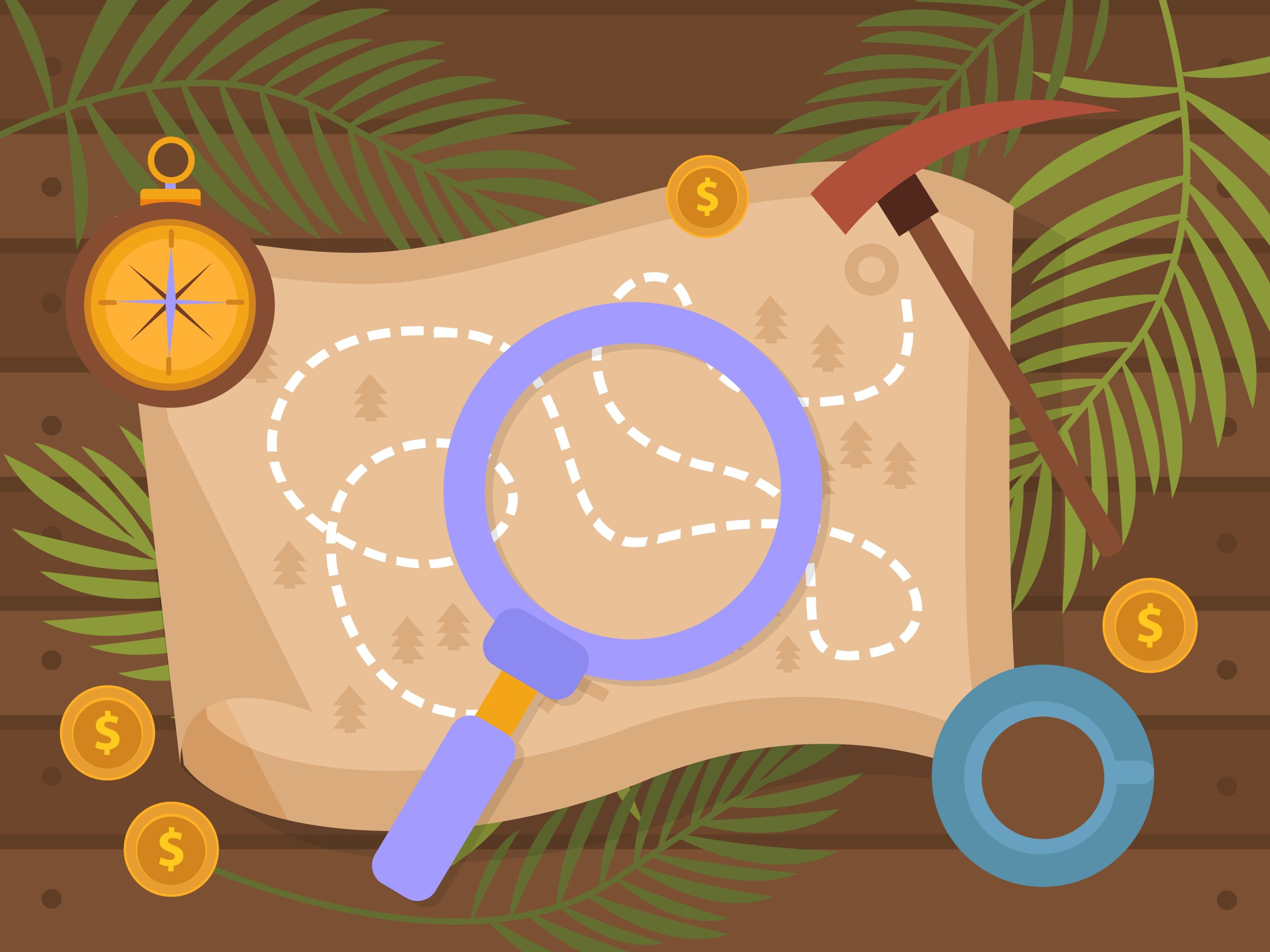Are you ready to embark on an exciting adventure with your kids? It’s time to create a treasure hunt with riddles! By planning a treasure hunt, you’ll not only have a blast, but you’ll also boost your child’s problem-solving skills and ignite their imagination. In this article, we’ll show you how to make a treasure hunt with riddles for your little ones. You’ll learn how to choose a theme, create engaging clues, and set up the hunt in a safe and fun way. Get ready to watch your kids eagerly search for hidden treasures as they solve riddles along the way. Let’s dive in and start making magical memories together!
Choose a Theme for the Treasure Hunt
Choose a theme that will excite and engage the kids in your treasure hunt adventure. Themed treasure hunts have many benefits for kids. They enhance their creativity and imagination, develop their observational skills, and provide hands-on learning opportunities. When creating age-appropriate riddles for treasure hunts, keep them short and simple. You can use rhymes to make them more engaging and focus on common objects or animals in the surroundings. Categorize the clues based on indoor or outdoor locations and provide characteristics of the items to be found for added creativity.
Choosing the perfect location for a treasure hunt is crucial. Consider the space available and the age of the kids. Indoor hunts are best for smaller kids with shorter attention spans, while backyard or neighborhood hunts can be tackled by older kids without supervision. If you want to incorporate technology into your treasure hunt, you can use a camera or a phone for a photo scavenger hunt. Taking pictures of nooks and crannies in and around the home and using them as clues will engage older kids who enjoy using devices.
To add excitement to the treasure hunt, think of creative ideas for prizes or rewards for the winners. It could be small toys, treats, or even a special outing. The key is to make it something that will motivate and excite the kids. By choosing a theme, creating age-appropriate riddles, picking the perfect location, incorporating technology, and offering creative rewards, you can ensure that your treasure hunt will be a memorable and exciting adventure for the kids.
Create a List of Riddles for the Clues
Now it’s time to come up with a list of riddles for the clues in your treasure hunt. Here are some tips to help you create exciting and engaging riddles that will keep the kids entertained:
- Riddle difficulty levels for different age groups:
- Keep the riddles simple and straightforward for younger children.
- Add a bit of challenge for older kids by using wordplay or clever clues.
- Creative ways to incorporate the theme into the riddles:
- If your treasure hunt has a pirate theme, use riddles about buried treasure and pirate adventures.
- For a superhero theme, include riddles about saving the day and finding hidden powers.
- Tips for making the riddles more interactive and hands-on:
- Incorporate actions or movements into the riddles, such as “jump three times” or “spin around in a circle.”
- Use sensory clues, like describing how an object feels or smells, to engage the children’s senses.
- Using visual aids or props to enhance the riddles:
- Create visual clues by drawing pictures or using photographs.
- Use props or objects related to the theme to make the riddles more exciting.
- How to create a cohesive storyline with the riddles:
- Start with an introduction that sets the stage for the treasure hunt and introduces the goal.
- Connect the riddles together to form a storyline, with each clue leading to the next.
Determine the Location and Set Up the Hunt
Find the Perfect Location and Prepare for the Hunt
Now that you have your riddles ready, it’s time to determine the location and set up the treasure hunt! Choosing the right location is important because it sets the stage for the adventure. Consider places like your backyard, a local park, or even inside your home. Wherever you decide, make sure it is safe and suitable for children to explore.
Incorporating physical activity into treasure hunts is a great way to keep kids active and engaged. You can design a hunt that requires them to run, jump, or climb to find the hidden treasures. It not only adds excitement but also promotes a healthy lifestyle.
Treasure hunts can be a fun activity for the whole family, so why not involve parents in organizing the hunt? They can help with setting up the clues, hiding the treasures, and even joining in on the adventure. It’s a great opportunity for parents and children to bond and work together as a team.
Adding educational elements to the treasure hunt riddles can make the experience both entertaining and educational. You can create riddles that require problem-solving skills, observation, and critical thinking. This way, kids can learn while having fun.
If you want to give your treasure hunt a modern twist, consider incorporating technology. You can create QR codes that lead to the next clue or use a smartphone app to track progress. This adds a high-tech element to the hunt and makes it even more exciting for tech-savvy kids.
Lastly, treasure hunts can be adapted to different occasions and events. Whether it’s a birthday party, a holiday celebration, or a simple weekend activity, you can customize the clues and treasures to fit the theme. This makes the hunt more relevant and enjoyable for kids.
Hide the Treasure and Place the Clues
Once you have determined the location and set up the hunt, it’s time to hide the treasure and place the clues for an exciting adventure. Here are some tips to make your treasure hunt even more fun:
- Creative hiding spots: Think outside the box and hide the treasure in unexpected places. You can hide it under a tree stump, inside a flower pot, or even in the mailbox. The more creative the hiding spot, the more exciting the hunt will be.
- Incorporating props and decorations: Enhance the treasure hunt experience by incorporating props and decorations that match the theme. For example, if you’re having a pirate-themed treasure hunt, you can use a treasure chest as the final hiding spot and decorate the area with pirate flags and gold coins.
- Using technology in the treasure hunt: Make use of smartphones or tablets to incorporate technology into the treasure hunt. You can create QR codes that lead to the next clue or use a GPS app to guide the participants to different locations.
- Including physical challenges in the hunt: Add a physical element to the treasure hunt by including challenges that the participants have to complete in order to receive the next clue. For example, they might have to solve a puzzle, complete a mini obstacle course, or find a specific object within a time limit.
- Collaborative treasure hunts with multiple teams: Divide the participants into teams and make it a collaborative treasure hunt. Each team can have their own set of clues and compete against each other to find the treasure first. This adds an element of teamwork and friendly competition to the adventure.
Write the Riddles in a Fun and Engaging Way
To make your treasure hunt even more exciting, write engaging and fun riddles that will challenge and entertain the kids. Get creative with your riddle ideas for treasure hunts and find engaging ways to incorporate them into your scavenger hunt. Here are some tips to make your riddles more challenging and fun for kids:
- Age-appropriate riddles: Consider the age group of the children participating in the treasure hunt. Tailor the riddles to their level of understanding and enjoyment. Younger kids may need simpler clues, while older kids can handle more complex riddles.
- Use vivid language: Make your riddles come alive with descriptive and imaginative language. Use colorful adjectives and action verbs to paint a picture in the kids’ minds.
- Rhyme and rhythm: Kids love rhymes and rhythm. Incorporate them into your riddles to make them more engaging and memorable. This will also help the kids remember the clues more easily.
- Visual cues: Consider using visual cues in your riddles. Include pictures or symbols that hint at the location of the next clue. This will add an extra layer of excitement and challenge to the treasure hunt.
- Interactive elements: Think outside the box and include interactive elements in your treasure hunt. For example, have the kids solve a puzzle or complete a physical challenge to unlock the next clue. This will make the treasure hunt more interactive and enjoyable for the kids.
Consider the Age and Abilities of the Kids
When considering the age and abilities of the kids participating in the treasure hunt, it is important to tailor the difficulty level of the riddles to ensure an enjoyable and engaging experience. Here are some tips to create age-appropriate riddles that challenge problem solving skills and incorporate educational themes:
- Age-appropriate riddles: Make sure the riddles are suitable for the age group of the kids. Younger children may need simpler clues, while older kids can handle more complex ones.
- Riddles that challenge problem solving skills: Create riddles that require critical thinking, deductive reasoning, and problem solving. This will keep the kids engaged and encourage them to think outside the box.
- Incorporating educational themes into the riddles: Use riddles that relate to educational topics such as math, science, history, or literature. This will not only make the treasure hunt fun, but also provide an opportunity for learning.
- Using rhymes to make the riddles more engaging: Incorporate rhymes into the riddles to make them more engaging and enjoyable for the kids. Rhyming clues add a playful element to the treasure hunt and make it more memorable.
- Adapting the difficulty level of the riddles based on the kids’ abilities: Take into account the abilities and skills of the kids when creating the riddles. Make them challenging enough to keep the kids interested, but not so difficult that they become frustrated.
Provide Clear Instructions for the Hunt
Give the kids clear instructions for the treasure hunt. It’s important to set the stage and make sure everyone understands how the hunt will work. Here are some tips to help you provide clear instructions and make the treasure hunt a success.
First, create challenging riddles that will keep the kids engaged and excited. Use clever wordplay, rhymes, or puzzles to make the clues more fun and challenging. This will encourage critical thinking and problem-solving skills.
Second, consider incorporating educational elements into the treasure hunt. For example, you can include clues that require the kids to solve math problems, identify different types of plants, or learn about historical events. This way, the treasure hunt becomes a learning experience in disguise.
Next, add a time limit to make the hunt more exciting. Set a specific time frame for the kids to complete the hunt, and let them know that there will be a prize for finishing within the allotted time. This will create a sense of urgency and keep the kids motivated.
Don’t forget to include physical activities as part of the clue-solving process. For instance, you can have the kids complete a mini obstacle course or perform a series of exercises before they can move on to the next clue. This adds an element of movement and makes the hunt more interactive.
Lastly, adapt the treasure hunt for different age groups. For younger children, make the clues simpler and the hiding spots more accessible. For older kids, make the clues more challenging and the hiding spots more difficult to find.
Set Up Safety Guidelines for the Participants
Now, it’s important to prioritize the safety of the participants during the treasure hunt by establishing clear guidelines. Setting up safety guidelines will ensure that everyone has a fun and accident-free experience. Here are some tips for creating a safe environment:
- Ensuring participant supervision:
- Make sure there is always a responsible adult or older sibling present to supervise the participants.
- Assign a designated “treasure hunt leader” who can guide the kids and answer any questions they may have.
- Remind the participants to stay together and not wander off on their own.
- Teaching kids about safety measures:
- Before the treasure hunt begins, take a moment to explain some basic safety rules. For example, remind them to look both ways before crossing the street or to be cautious when climbing or exploring unfamiliar areas.
- Show them how to properly handle any props or equipment used during the treasure hunt, such as flashlights or magnifying glasses.
- Tips for avoiding accidents:
- Choose a location that is free from potential hazards, such as sharp objects or dangerous terrain.
- If the treasure hunt is taking place outdoors, make sure the participants are dressed appropriately for the weather and have sunscreen and insect repellent if needed.
- Encourage the participants to walk instead of run to prevent tripping or colliding with others.
Plan for Prizes or Rewards for the Winners
To ensure an exciting and motivating treasure hunt experience, it’s crucial to plan for enticing prizes or rewards for the winners. Offering different types of prizes or rewards can make the treasure hunt even more thrilling and enjoyable for the participants. You can get creative with the prizes, such as small toys, puzzle games, or even personalized certificates for the winners. Consider incorporating unique themes for the treasure hunts, like a pirate adventure or a superhero quest, to make the prizes more exciting and relevant to the theme.
If you want to switch things up from traditional riddles, you can use visual clues instead. This adds a visual element to the hunt and can make it more engaging for younger children who may not be able to solve riddles yet. You can create picture clues or use symbols that lead the participants to the next clue or hidden treasure.
Incorporating teamwork and collaboration into the treasure hunt can make it more interactive and encourage cooperation among the participants. You can divide them into teams and assign different roles, such as navigator, clue solver, and timekeeper. This promotes communication, problem-solving, and teamwork skills.
To make the treasure hunt more challenging for older kids, you can increase the complexity of the clues or introduce additional obstacles or puzzles to solve. This will keep them engaged and provide a greater sense of achievement when they successfully complete the hunt.
Make Sure to Have Fun and Enjoy the Treasure Hunt
One of the most important aspects of a treasure hunt is to have fun and enjoy the experience. After all, the whole point of a treasure hunt is to embark on an exciting adventure with your friends or family. Here are some tips to ensure that you have a blast during your treasure hunt:
- Tips for creating challenging riddles:
- Make the riddles tricky, but not impossible to solve.
- Use wordplay, rhymes, or puzzles to make the riddles more engaging.
- Incorporate clues that require some thinking and problem-solving skills.
- Ways to incorporate teamwork in a treasure hunt:
- Divide into teams and compete against each other to add a sense of excitement.
- Assign different roles within the team, such as a navigator or a clue reader.
- Encourage collaboration and communication between team members.
- Fun variations of treasure hunt themes:
- Choose a theme that matches your interests or the occasion, such as pirates, superheroes, or dinosaurs.
- Create a storyline or a quest that adds an extra layer of excitement to the treasure hunt.
- Incorporate elements of surprise, like hidden traps or secret codes, to keep everyone on their toes.



